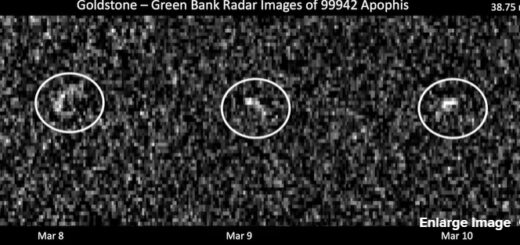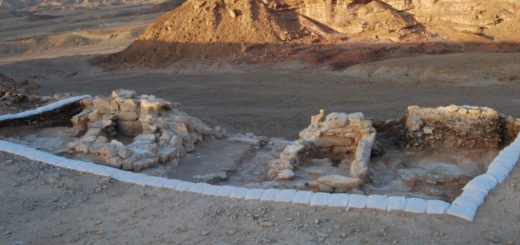How Light Propulsion Will Work

More than 20 years ago, the United States began to develop a missile defense system that was given the nickname “Star Wars.” This system was designed to track and use lasers to shoot down missiles launched by foreign countries. While this system was designed for war, researchers have found many other uses for these high-powered lasers. In fact, lasers could one day be used to propel spacecraft into orbit and to other planets.
To reach space, we currently use the space shuttle, which has to carry tons of fuel and have two massive rocket boosters strapped to it to lift off the ground. Lasers would allow engineers to develop lighter spacecraft that wouldn’t need an onboard energy source. The lightcraft vehicle itself would act as the engine, and light — one of the universe’s most abundant power sources — would be the fuel.
A lightcraft in action. The bright light you see is the air combusting under the rim of the craft.
A lightcraft in action. The bright light you see is the air combusting under the rim of the craft.
PHOTO COURTESY RENSSELAER
The basic idea behind light propulsion is the use of ground-based lasers to heat air to the point that it explodes, propelling the spacecraft forward. If it works, light propulsion will be thousands of times lighter and more efficient than chemical rocket engines, and will produce zero pollution. In this edition of How Stuff WILL Work, we’ll take a look at two versions of this advanced propulsion system — one may take us from the Earth to the moon in just five and a half hours, and the other could take us on a tour of the solar system on “highways of light.”
Light-propelled rockets sound like something out of science fiction — spacecraft that ride on a laser beam into space, require little or no onboard propellant and create no pollution. Sounds pretty far-fetched, considering we haven’t been able to develop anything close to that for conventional ground- or air-travel on Earth. But while it may still be 15 to 30 years away, the principles behind the lightcraft have already been successfully tested several times. A company called Lightcraft Technologies continues to refine the research that began at Rensselaer Polytechnic Institute in Troy, N.Y.
The basic idea for the lightcraft is simple — the acorn-shaped craft uses mirrors to receive and focus the incoming laser beam to heat air, which explodes to propel the craft. Here’s a look at the basic components of this revolutionary propulsion system:
Carbon-dioxide laser – Lightcraft Technologies uses a Pulsed Laser Vulnerability Test System (PLVTS), an offspring of the Star Wars defense program. The 10 kw pulsed laser being used for the experimental lightcraft is among the most powerful in the world.
Parabolic mirror – The bottom of the spacecraft is a mirror that focuses the laser beam into the engine air or onboard propellant. A secondary, ground-based transmitter, telescope-like mirror is used to direct the laser beam onto the lightcraft.
Absorption chamber – The inlet air is directed into this chamber where it is heated by the beam, expands and propels the lightcraft.
Onboard hydrogen – A small amount of hydrogen propellant is needed for rocket thrust when the atmosphere is too thin to provide enough air.
Prior to liftoff, a jet of compressed air is used to spin the lightcraft to about 10,000 revolutions per minute (RPMs). The spin is needed to stabilize the craft gyroscopically. Think about football: a quarterback applies spin when passing a football to throw a more accurate pass. When spin is applied to this extremely lightweight craft, it allows the craft to cut through the air with more stability. Click here to see a video of the lightcraft in action. (The free Windows Media Player Version 6.4 or greater is needed to view the video.).
Once the lightcraft is spinning at an optimal speed, the laser is turned on, blasting the lightcraft into the air. The 10-kilowatt laser pulses at a rate of 25-28 times per second. By pulsing, the laser continues to push the craft upward. The light beam is focused by the parabolic mirror on the bottom of the lightcraft, which heats the air to between 18,000 and 54,000 degrees Fahrenheit (9,982 and 29,982 degrees Celsius) — that’s several times hotter than the surface of the sun. When you heat air to these high temperatures, it is converted to a plasma state — this plasma then explodes to propel the craft upward.
Lightcraft Technologies, Inc., with FINDS sponsorship — earlier flights were funded by NASA and the U.S. Air Force — has tested a small prototype lightcraft several times at the White Sands Missile Range in New Mexico. In October 2000, the miniature lightcraft, which has a diameter of 4.8 inches (12.2 cm) and weighs only 1.76 ounces (50 grams), achieved an altitude of 233 feet (71 meters). Sometime in 2001, Lightcraft Technologies hopes to send the lightcraft prototype up to an altitude of about 500 feet. A 1-megawatt laser will be needed to put a one-kilogram satellite in low earth orbit. Although the model is made of aircraft-grade aluminum, the final, full-size lightcraft will probably be built out of silicon carbide.
This laser lightcraft could also use mirrors, located in the craft, to project some of the beamed energy ahead of the ship. The heat from the laser beam would create an air spike that would divert some of the air past the ship, thus decreasing drag and reducing the amount of heat absorbed by the lightcraft.



 Creators of mankind
Creators of mankind Description of “Tall white aliens”
Description of “Tall white aliens” Where they came from?
Where they came from? About hostile civilizations
About hostile civilizations The war for the Earth
The war for the Earth “Tall white aliens” about eternal life
“Tall white aliens” about eternal life Video: “Nordic aliens”
Video: “Nordic aliens” Aliens
Aliens Alien encounters
Alien encounters The aliens base
The aliens base UFO
UFO Technology UFO
Technology UFO Underground civilization
Underground civilization Ancient alien artifacts
Ancient alien artifacts Military and UFO
Military and UFO Mysteries and hypotheses
Mysteries and hypotheses Scientific facts
Scientific facts


















